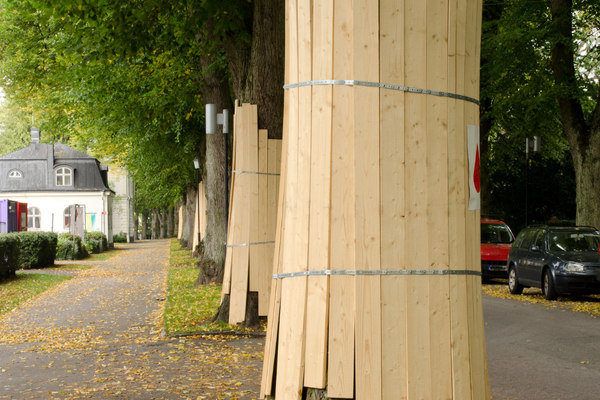So, what can you do? You can practice “proactive tree preservation.”
This is a fancy term for a simple idea. It means a regular maintenance plan to keep your trees healthy before problems start. It is about checking on your trees and giving them what they need. It is about making their growing conditions as good as possible. It is much easier and cheaper to keep a tree healthy than to try and save a sick one.
Here are the 3 core techniques for Rock Hill homeowners.
1. Proper Mulching
Mulch is a tree’s best friend in our summer heat. But many people do it wrong. You may see “mulch volcanoes,” where mulch is piled high against the trunk. This is very bad. It holds moisture against the bark and causes it to rot. It also invites pests.
The right way is the “3-3-3 Rule.”
- Spread mulch 3 inches deep. Any deeper, and it can block air and water.
- Keep mulch 3 inches away from the trunk. Create a little donut hole, not a volcano. This lets the trunk breathe.
- Spread the mulch out to 3 feet or more (all the way to the drip line is best).
This simple step holds moisture in the soil during droughts. It keeps the soil cooler. It also stops weeds.
2. Smart Watering for SC Droughts
Mature, big trees do not need to be watered like your lawn. A light sprinkle from a lawn sprinkler does nothing for a big tree. The water does not get down to the deep roots.
Big trees need deep, infrequent watering. How do you do this? Get a soaker hose. Lay it in a big circle at the “drip line.” The drip line is the ground at the very edge of the tree’s branches. Let the hose drip slowly for several hours. This lets the water soak deep, deep into the soil. This encourages roots to grow deep, which makes the tree stronger against wind and drought. You only need to do this during very hot, dry periods.
3. Structural Pruning
This is the single best thing you can do to prevent storm damage later in life. When a tree is young, a professional arborist from a company like Niwaki Tree and Shrub can prune it. This is not about cutting a lot off. It is about making smart, small cuts. The goal is to establish a strong, single “leader” (the main trunk that goes all the way to the top). It also creates good, even spacing between the main branches. A tree that grows with a good “skeleton” is much, much stronger. It will handle ice storms and high winds much better when it is big. This is a small investment that pays off big for the rest of the tree’s long life. Good pruning is a key part of any plant health care plan.


